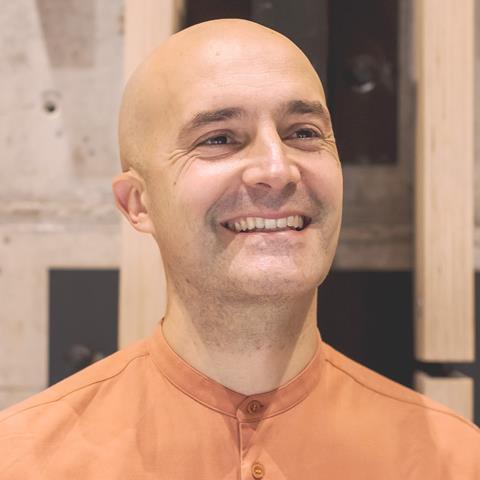Working in a local authority opens up a wide range of opportunities to work at the strategic level, writes Andrea Bugli

I moved to London over 13 years ago to pursue my career in architecture, after graduating from university in Italy. I’ve always believed in the transformative potential of design to improve people’s lives for the better, and I’ve tried to find my own route to this, working for different practices on a very diverse range of projects as well as teaching design units and workshops at architecture schools in the UK and abroad.
Like many others, I went through a professional crisis during COVID-19, witnessing first-hand the impact that poorly designed spaces had on people and their communities. I found myself unhappy and unsatisfied. Instead of working on high-end projects in other countries, I felt I wanted to find ways to have a positive and direct impact on the lives of people living around me.
This uneasiness gave me the courage to begin exploring different opportunities, and I enrolled in a part-time master’s course on Central Saint Martins’ MA Cities course, which explored urban development and regeneration processes via forms of participatory practice. The master’s gave me exposure to the work of local authorities in London and departments at the GLA, and by the end of it, I knew I needed a career change.
Public Practice provided the perfect bridge for my next step, and, in November 2022, I joined Enfield Council as the Place Shaping Delivery Manager within the Journeys and Places Team, working on public realm improvements in the main town centres of the borough and delivering projects with communities to develop thriving, safe and inclusive urban spaces.
After more than a decade in the private sector, the change has not been easy. Particularly at the very beginning of my placement, I often asked myself what I could really bring to this job from my architectural experience. Also, having worked in medium and small offices for most of my life, the complex structure of a council was difficult to grasp.
It took me some time to fully understand my role, as well as the dynamics of working within a local authority, but I’ve really begun enjoying my job more and more.
Public Practice was instrumental in my “soft” transition to the public sector thanks to the training, the support and a cohort of Associates with whom I could share struggles and suggestions to navigate the first few months.
Each intervention becomes a catalyst to bring local people together, to build social cohesion and relationships within the local community
During my first year, I’ve been involved in a broad range of projects: from the development of a long-term vision for one of Enfield’s main town centres to the preparation of some simple how-to guidance, to support local groups in the organisation of small community events to build social cohesion at the hyperlocal level.
The project I’ve spent the most time on, and which embodies our team’s approach, is the long-term redevelopment of an unused green area in the heart of Edmonton Green town centre, which aims to create social space and infrastructure in one of the most deprived areas of the borough.
The project is delivered incrementally, as are many of our team’s schemes. It began with a series of summer events organised in 2023 together with local artists, gardeners and youth groups, to bring residents together and to begin changing the narrative of the space. A temporary pavilion, co-designed with the local community, will be on-site this summer to host a cultural festival and a summer programme of community activities.
Along with this, we are hoping to create a “Friends of the Green” group which will support steering the longer-term improvement of the space. All these events are opportunities to “engage by doing”: bringing people together, encouraging them to share ideas and enabling residents and communities to take the lead on making positive changes to their local environment. Ultimately our aim is to build community cohesion and develop the social infrastructure that can support more positive transformation.
The core focus of my role in the council is places stewardship: opening up possibilities for community participation, enabling conversation and exchange around each intervention and empowering local communities in taking the lead on the future of the built space they live in.
I cherish the time I get to spend with local residents and stakeholders, discussing how each project can evolve and how it can contribute to the creation of a more equitable and inclusive environment. They know the ins and outs of their local area much better than I do, and I always find these exchanges really precious and insightful.
From the outside, projects might seem to progress at a slow pace, but I’ve learnt that it is crucial to allow for an open and equitable engagement both within and outside the council, as well as to test and evaluate different options. Ultimately each project becomes an exercise of building trust with the local community so that each intervention can have a broader impact than its physical manifestation.
I sometimes miss participating hands-on in the design process, discussing materials and details, but I find it really fulfilling to focus on the strategic aspects of each intervention: from the participatory development of ideas, through the different possibilities and rhythms of use, to stewardship, maintenance and legacy.
Each intervention becomes a catalyst to bring local people together, to build social cohesion and relationships within the local community. While some projects might seem small, I can see their outcome going a long way, and I feel my work is finally creating the positive impact I’ve been longing for.
Postscript
Andrea Bugli is place shaping delivery manager at Enfield Council and a Public Practice alumnus
















No comments yet